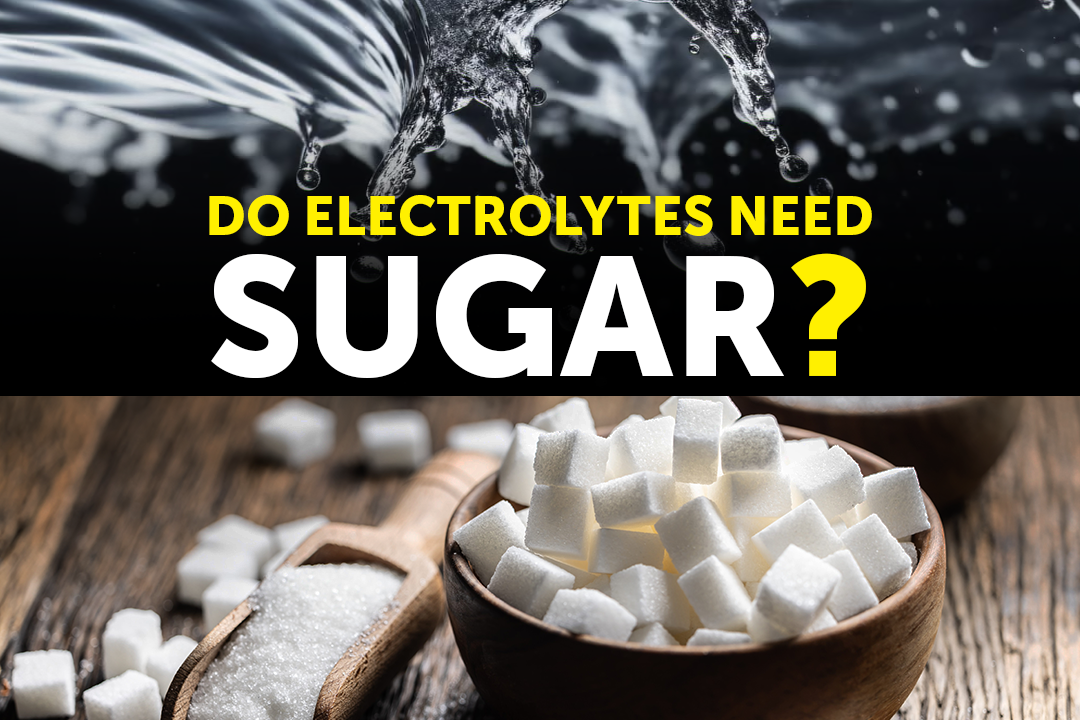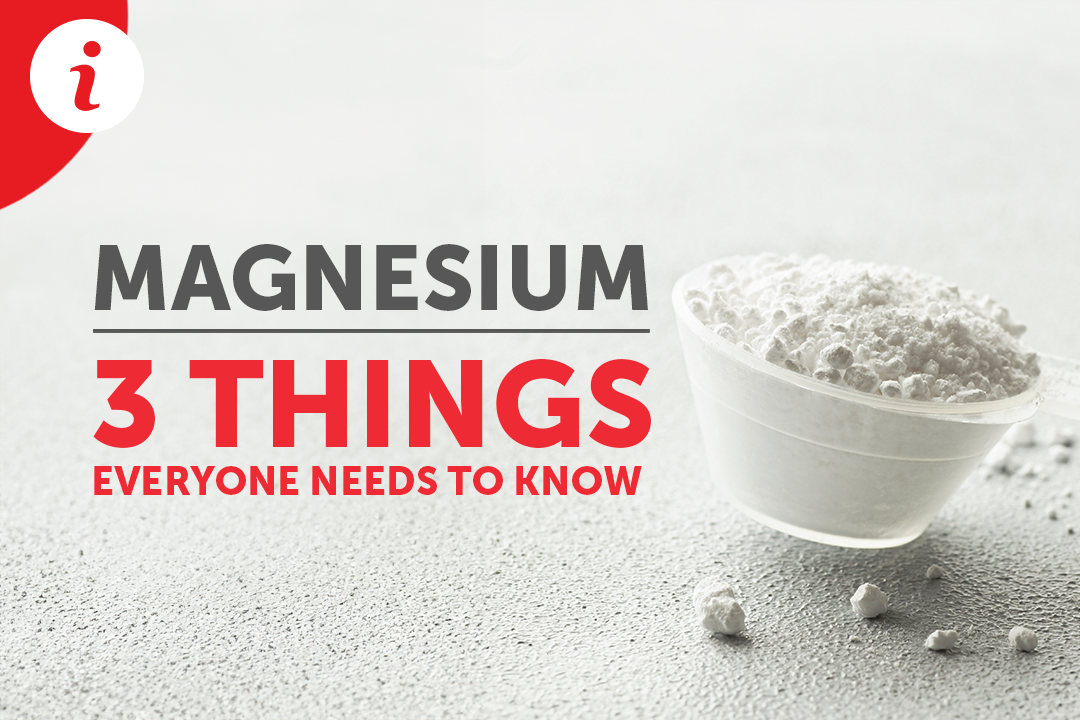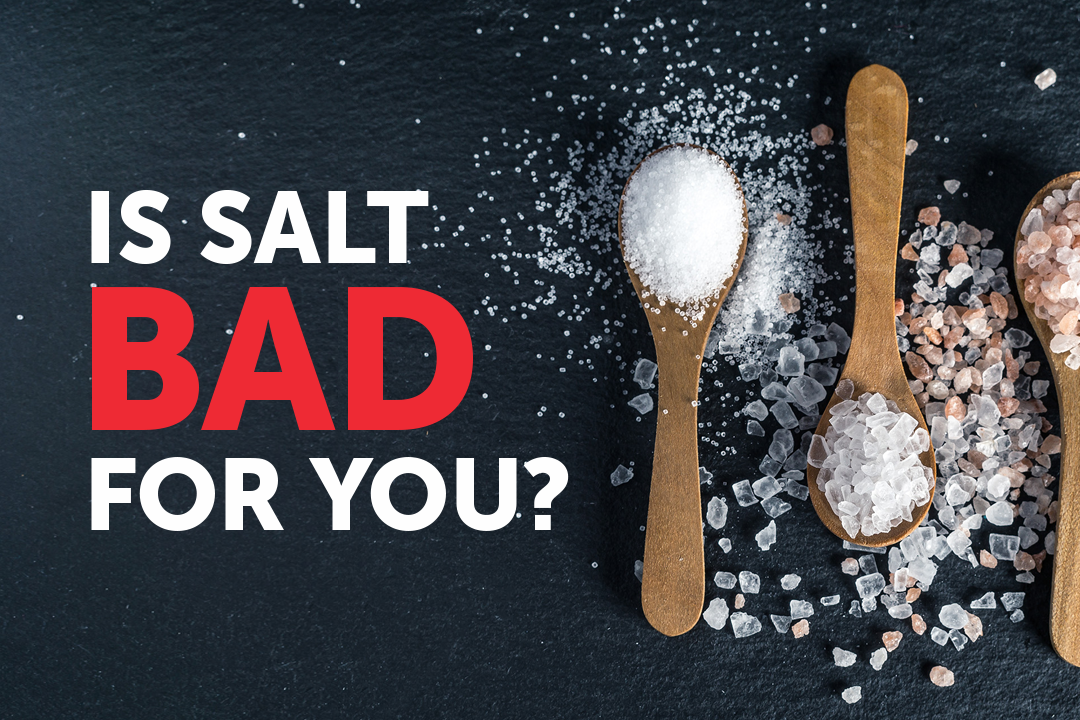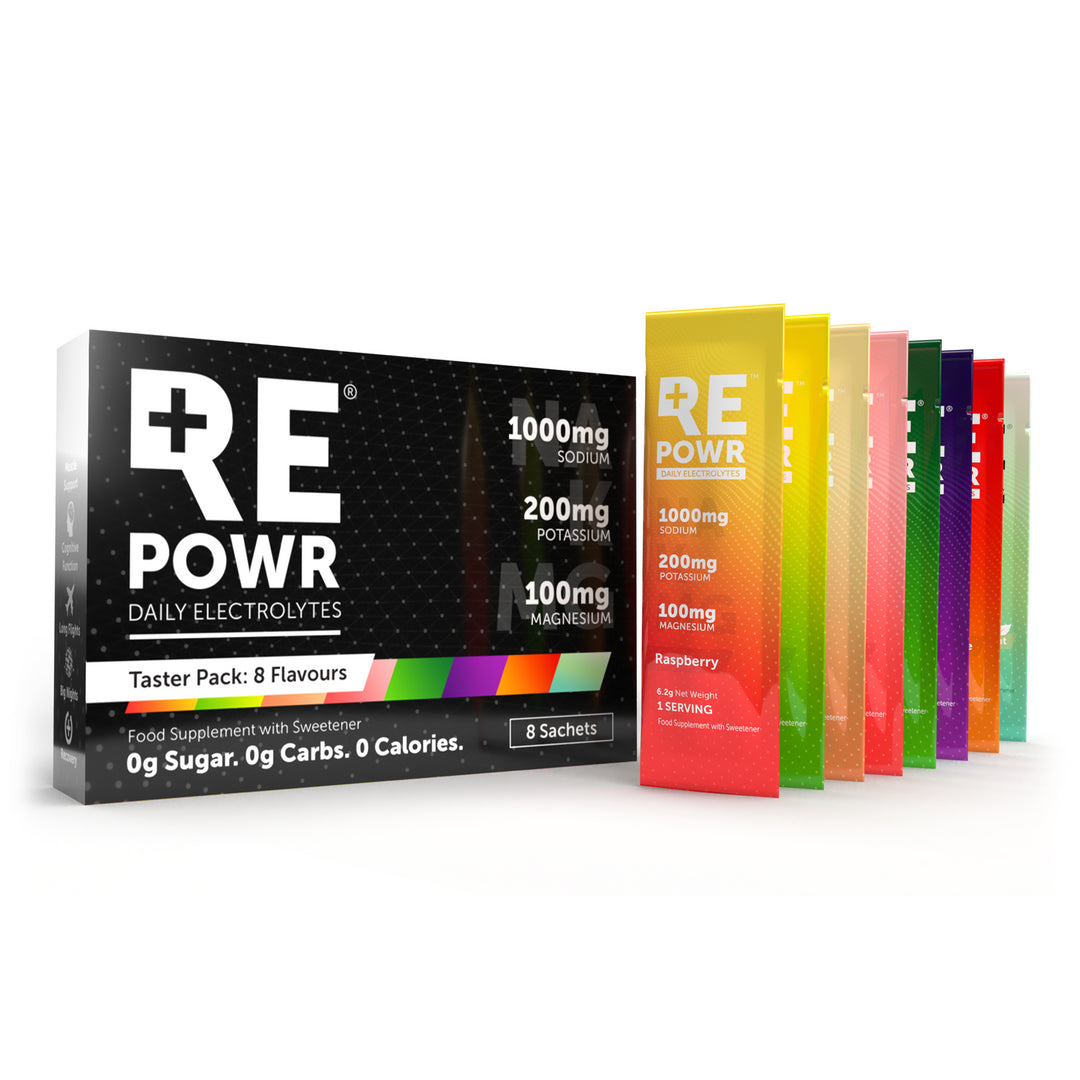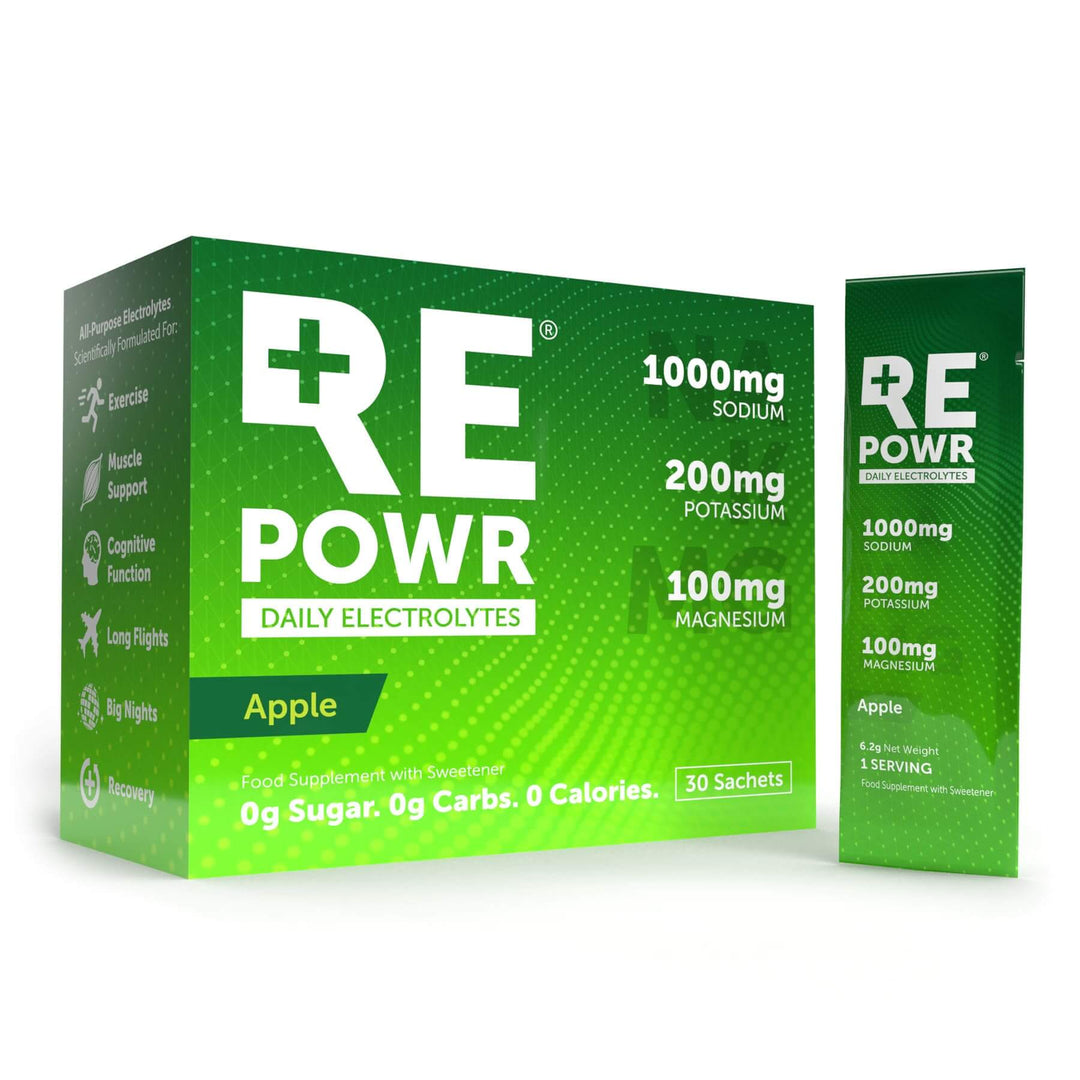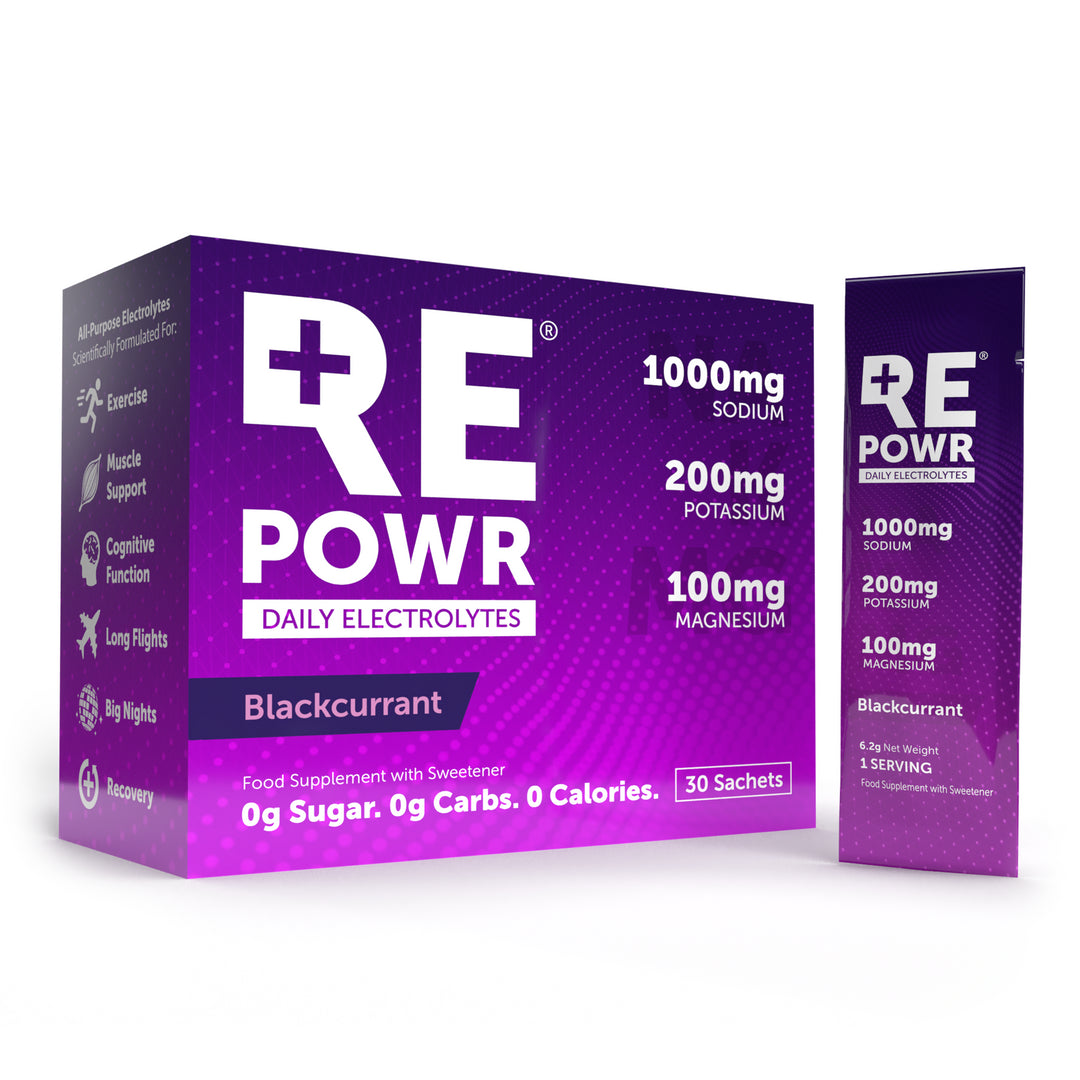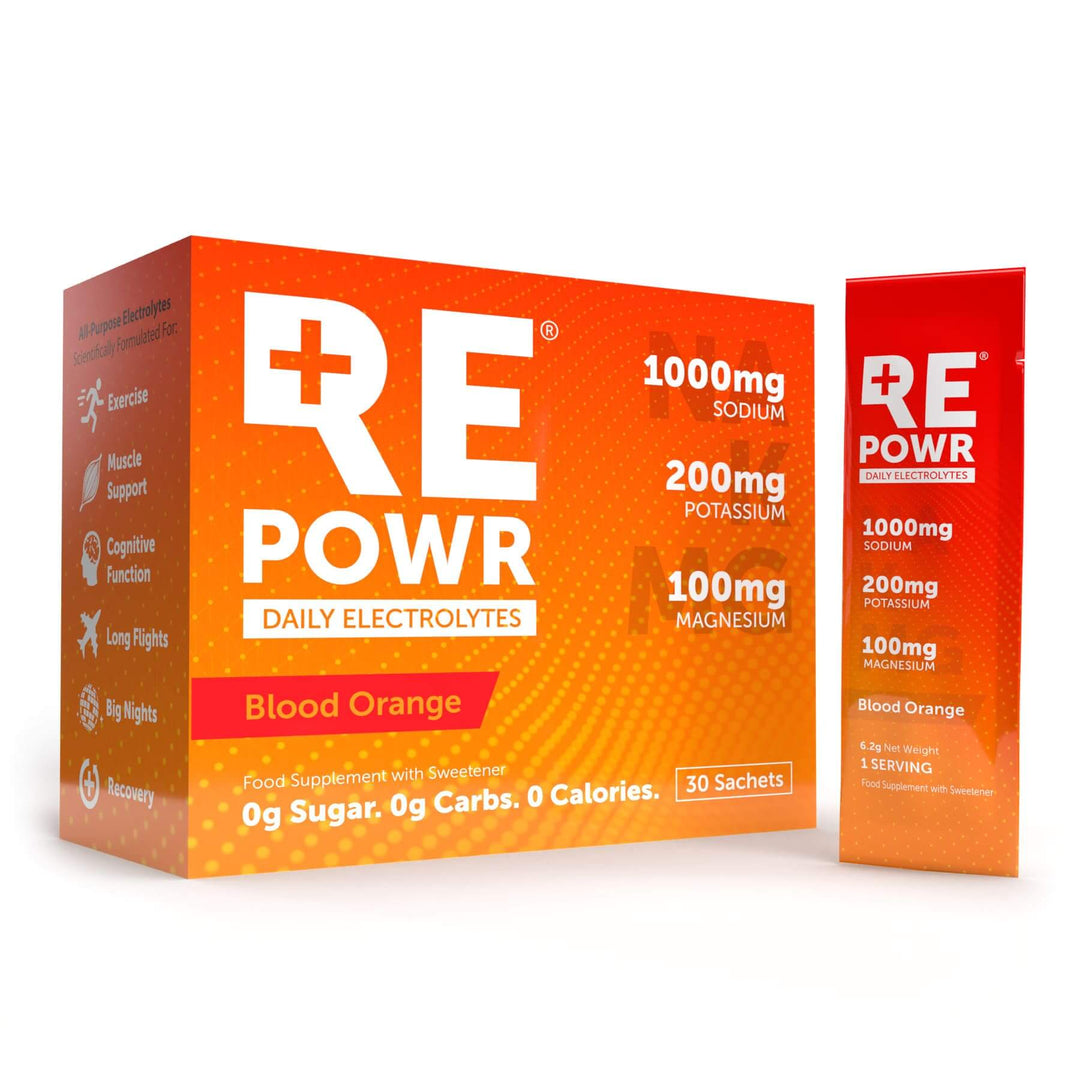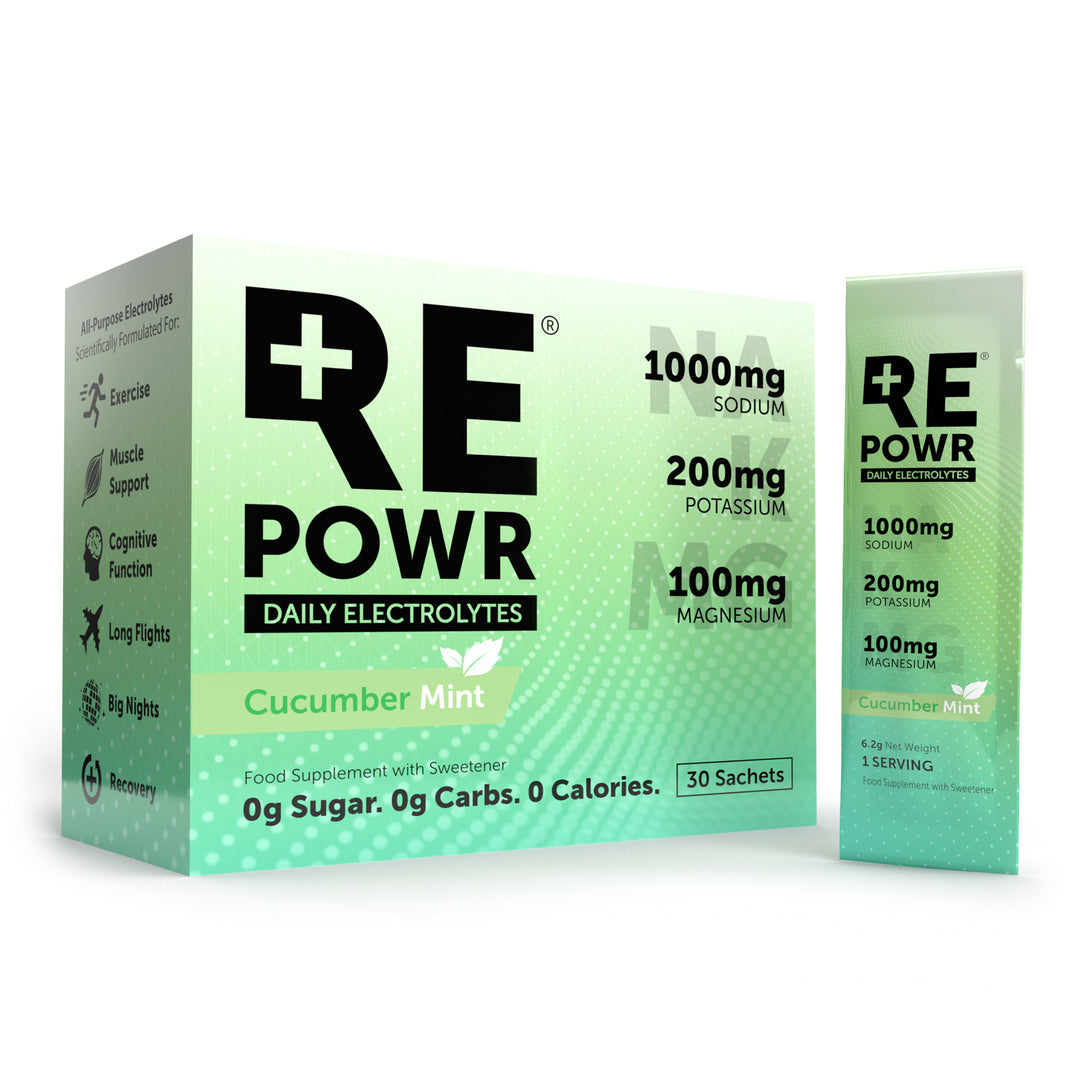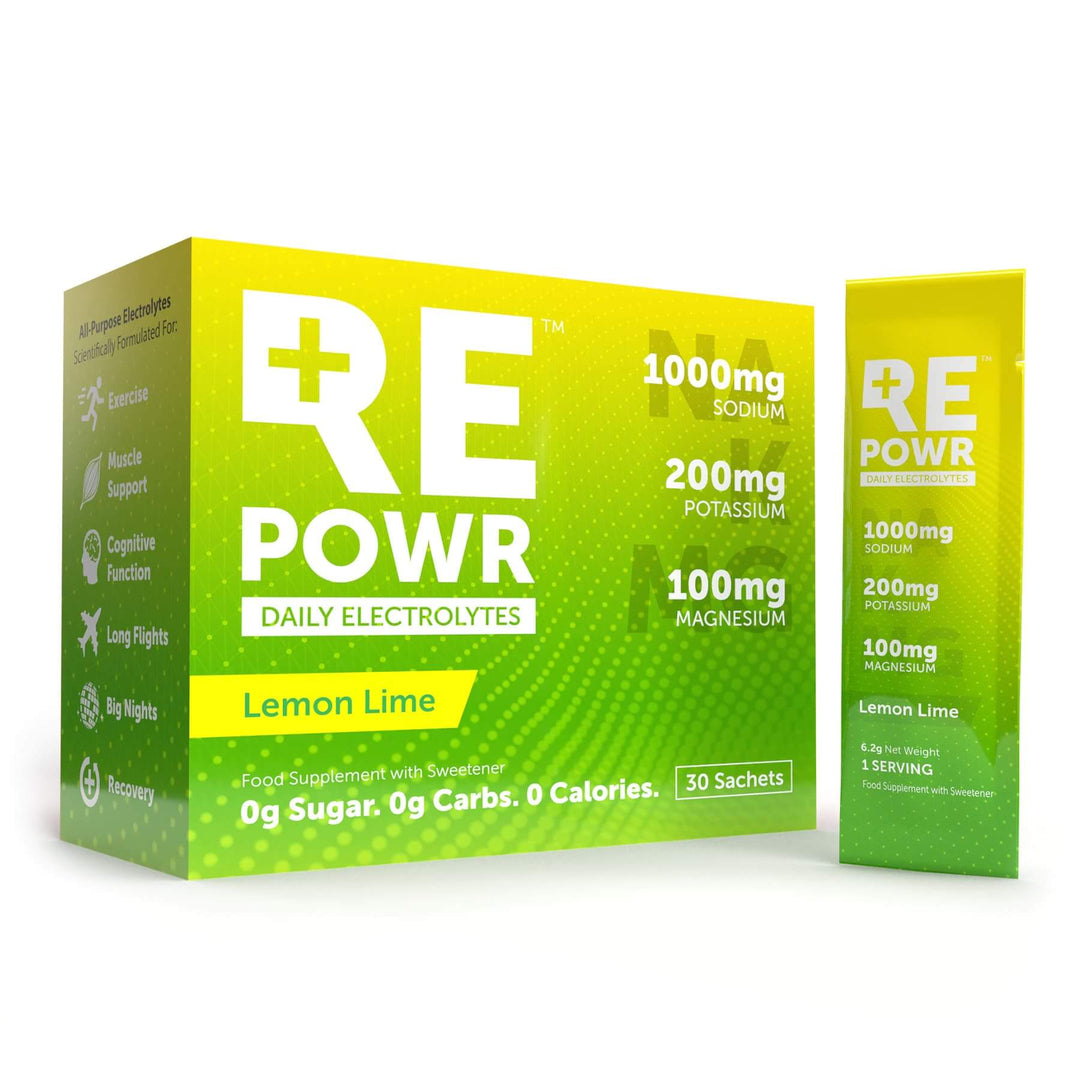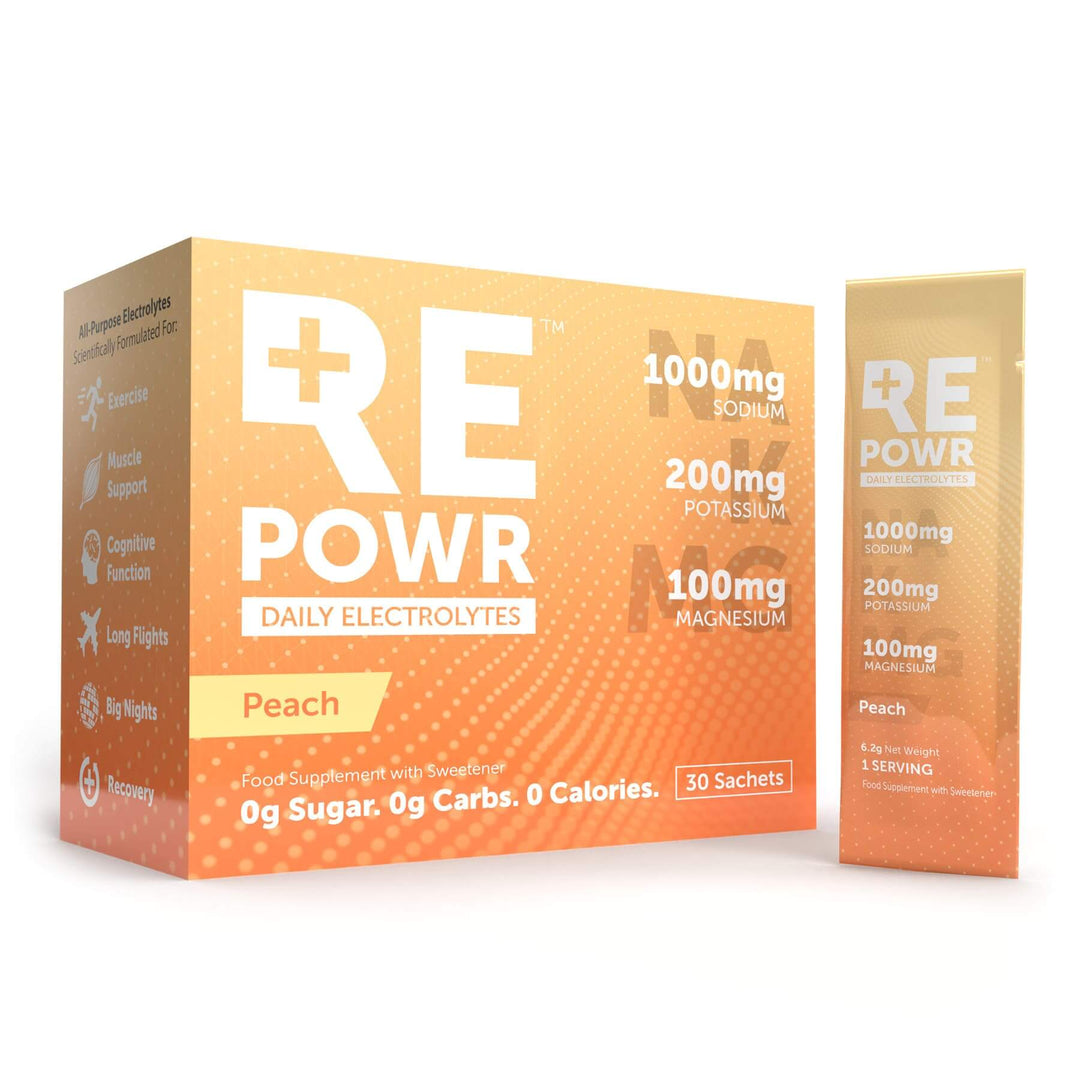Do Electrolytes Need Sugar?
One of the most important medical advances of the 20th century
Oral Rehydration Therapy, or ORT, has been credited with saving tens of millions of lives. What is ORT? It's a combination of water, sodium, potassium and glucose. In 1978, The Lancet called it, “potentially the most important medical advance of the 20th century”. How can something this simple be this important? The answer lies in a single word - cholera.
Cholera is an acute bacterial infection that kills millions. It thrives in areas of poor sanitation, especially during crises, like floods or wars, where access to clean water is disrupted. Affecting the small intestine, cholera causes severe diarrhoea and dehydration, which can be fatal if untreated. 5 to 10 million people lost their lives to cholera during the 20th century alone and many more before that, when sanitation was undeveloped.
Therapy for cholera evolved over centuries. Interestingly, its development is rooted in understanding how the body manages water and electrolyte balance.
Simple observations became life saving therapy
Back in 1831, a British physician named William Brooke O'Shaughnessy proposed that replacing water and salts may help treat cholera, based on his analysis of stool and blood composition. Taking this solution orally wasn’t considered because we didn’t understand how nutrients were absorbed in the gut. It took over a century for the modern foundation of ORT to emerge, driven by advances in physiology.
In the 1950s, researchers like Daniel Darrow began systematically studying dehydration in children with diarrhoea. Darrow’s work showed that a balanced mix of sodium, potassium and water could correct electrolyte imbalances, initially through intravenous methods. Around the same time, scientists were uncovering how the intestines absorb glucose and sodium together, even in diseased states. This proved to be a key insight for ORT.
The breakthrough came during the 1960s and 1970s, amid cholera outbreaks in South Asia. In 1968, researchers David Nalin and Richard Cash, working in Bangladesh, tested oral solutions containing glucose, sodium chloride, sodium bicarbonate, and potassium chloride on cholera patients. Their trials demonstrated that this mixture could rehydrate patients effectively. Simultaneously, Indian scientist Dilip Mahalanabis applied ORT during the 1971 Bangladesh Liberation War, treating refugees with a simple homemade version - salt, sugar and water - proving its practicality in crisis settings. Mortality rates dropped from 30% to 3%. His success showcased ORT’s potential as a low-cost, scalable solution.
The World Health Organization (WHO) took notice, and by 1978 it launched a global program to promote ORT, standardising the formula. The classic ORT recipe - sodium chloride, glucose, trisodium citrate, and potassium chloride - became a cornerstone of diarrhoea management. UNICEF estimates that ORT has prevented over 70 million deaths since its widespread adoption - a staggering achievement.
The triumph of taste
Despite its success, ORT was due for another round of innovation, this time based on human behaviour rather than breakthrough science.
Dr. Eduardo Dolhun, a Mayo Clinic-trained family physician, known for his humanitarian work, gained experience treating dehydration during a cholera outbreak in Guatemala in 1993. He observed that taste was a major barrier to consuming Oral Rehydration Solutions based on the WHO formula, especially among children, who are naturally more vulnerable to the effects of cholera. Kids would spit it out, undermining its life-saving potential. Dr Dolhun refined the formula for greater palatability in both adults and children. He tested it in his San Francisco clinic until he was satisfied, completing the work in 2010.
Dolhun commercialised this new formulation, giving rise to a company called DripDrop which received patents, raised significant capital and gained global respect for its humanitarian work. A portion of each sale went towards funding humanitarian hydration needs. In 2014, DripDrop won an Edison Award for contribution to medical innovation. It has become a big success story, both as a consumer brand and life-saving product.
From diarrhea to triathlons
After ORT’s endorsement by the WHO, many electrolyte products came to market, but almost all had a similar, WHO-approved foundation. There were minor variations: some products used maltodextrin instead of sugar, some had fructose and the flavours differed widely between products. The theme, however, was the same. Sports hydration products followed suit. In the athletic performance category, sugar has a dual purpose – it helps the absorption of electrolytes and also provides fuel for energy hungry athletes. These products were well received. It wasn’t until much later that sugar started to become a double-edged sword.
Sugar’s fall from grace
In 1972, a brilliant physiologist and professor of nutrition named John Yudkin wrote a prescient book called “Pure, White and Deadly”, describing sugar’s effects on the body and correctly predicting the rise in obesity and diabetes to come. But Yudkin was discredited by the “fat mafia” (doctors and scientists who believed that the consumption of fat was primarily to blame for obesity and cardiovascular disease) and it wasn’t until the early 2000s that people started coming around to his view. A seminal article by Gary Taubes titled “What If It’s All Been A Big Fat Lie”, published in the New York Times Magazine in 2002, ushered in the new era of sugar bashing.
It started slowly, but as the general population gained weight in the 1970s and 80’s, and developed more chronic disease, the paradigm emerged linking sugar to metabolic problems. Dr Gerald Reaven, a Standford University endocrinologist, did ground-breaking work on metabolic syndrome and insulin resistance. Dr Reaven showed how this dysfunctional state was strongly linked to a variety of diseases and, eventually, premature death.
Hydration was slow to catch on
Hydration products didn't change for a long time. Sugar was still seen as essential to its efficacy. People were, understandably, caught up in the life-saving aspect and weren't connecting the effects on health. But, as the anti-sugar movement gained traction, hydration became ripe for innovation.
Three trends created the wave
Three separate trends came together to create a new generation of hydration products. First the healthy eating movement took off. After many false starts over the decades, carbohydrate lowering gained real traction. The idea was that if you lower carbohydrates, you lower insulin, and if you lower insulin, you lose fat. Remember that sugar is a simple carbohydrate. Eggs in, oats out. Intermittent fasting became wildly popular too. Seemingly overnight, breakfast was NOT the most important meal of the day. If you aren’t hungry, don’t eat. Simple, effective and easy to follow, 16:8 became part of dinner time conversation.
Curiously, these dietary approaches put one in a physiological state that requires electrolytes. It turns out that lower insulin reduces the body's water volume. Our kidneys excrete water and sodium more readily. And, if not replaced, a person feels listless, "headachy" and gets “brain fog” - the so-called inability to think clearly. Athletic performance tanks. Muscle cramps appear out of the blue. Fortunately, sodium and water provide an almost instant cure. Just like with ORT, the simple act of hydration works, but this time without sugar. People started appreciating the importance of water plus electrolyte minerals.
The second trend was the rise of the longevity movement. Long seen as the domain of mad scientists and eccentric billionaires, biohacking entered the mainstream, and, for the first time, doctors become mini-celebrities in their own right. Podcasts caught on as a medium. They proved a good way to delve into the details of how to live healthier and longer. The public felt connected to their favourite medical expert. People like Dr Peter Attia and Dr Mark Hyman gained widespread following and popularity. Sara Szal Gottfried and Mindy Pez (Fast Like A Girl) became the go-to female health experts. And Gabriel Lyons became "the muscle doctor".
A strange new world emerged. Now you can get the benefits of fasting while still eating, though not very much, if you spend a lot of money on Dr Valter Longo's Fast-Mimicking-Diet. Cold plunges and sauna became "things". Alongside all this, hydration became sexy and one company stands out for creating the lingerie.
In 2018 an American company called LMNT was born, off the back of the insight that health-conscious people need daily electrolytes. LMNT became a single-product success with a simple, yet highly functional, formula. Sugar cannot be part of this formula because sugar is the most important substance to avoid with these biohacking methods, eating methods and “non-eating methods”, in the case of fasting. It resonated with people. The last thing all these health-conscious people wanted, or needed, with their water, was sugar. A new breed of careful consumer emerged – people who read the labels on the back.
The third trend concerned athletes. A more nuanced understanding of how the body uses energy was evolving. Athletes were long accustomed to fuelling with simple carbohydrates (basically sugar), but now they began to understand that there were times to consume energy and times to avoid it. Metabolic training became a technique of “teaching” the body how to utilize more body fat, giving athletes a competitive advantage. But here’s the upshot: this type of training requires that no carbs are consumed. Hydration products, laden with sugar, came under scrutiny. It wasn’t just that electrolyte formulations had sugar – they had a lot of it, with many products containing upwards of 90%.
In the middle of 3 tectonic shifts, the modern hydration wave came.
What about electrolyte absorption?
The question that remained was this: if you take the sugar out, can electrolytes be absorbed? The intuitive answer is, of course. Our bodies absorb sodium from salt when it’s consumed with food. Potassium is equally well extracted. Magnesium without sugar is absorbed nicely in tablet form. It is self-evident that absorption of these minerals takes place without sugar.
The physiology of electrolyte absorption is complicated. As one would expect of an evolved organism like humans, redundancy has been built into the system. Electrolytes are essential to life, so we have many ways to absorb them, from osmosis to epithelial channels to the various transporters and exchangers. Without going down a technical rabbit hole, take sodium, for example. We have the sodium-potassium pump, sodium-glucose transporters, sodium-amino acid transporters and sodium-hydrogen exchangers. There is similar variety for potassium and magnesium. No wonder then that electrolytes are readily absorbed without sugar. Headaches evaporate and cramps disappear without a glucose molecule being anywhere in sight.
Is there formal research on electrolyte absorption?
This isn’t a particularly well-studied area and there is much scope for further research, especially in the athletic performance context. We need to quantify exactly what the differences are in absorption rates under varying conditions, although it doesn't matter much for everyday life. For example, we’d like to let athletes know how they can optimise the absorption of electrolytes and fluid in race conditions, particularly if they are fuelling with other carbohydrate-based products. Would it matter, for example, if an athlete consumed a sugar-based energy gel at the same time as electrolytes without sugar? Does the dilution concentration matter? What happens if someone takes a dry powder and then consumes water 15 minutes later at a water point? Lots of questions remain that are worthy of study.
The critics are confused
The confusion about no-sugar electrolytes seems to stem from the history of ORT. What many forget is that ORT was designed for people dying of cholera, not people trying to be healthy, fasting for 16 hours or going for a 10km run. This is everyday life. When someone is dying, speed of absorption is important. But it comes at a cost to our metabolic health. If consumed regularly, in a non-life-threatening context, health is much more important than speed. And even when an athlete needs quick absorption, like during a race, they use sugar-based energy products anyway, which gives the no-sugar hydration an added boost.
ORT wasn’t designed for athletes trying to adapt their metabolisms for greater efficiency. It wasn’t designed for people with diabetes looking to avoid blood sugar spikes, or breastfeeding moms coping with lack of sleep and additional fluid demands of producing breast milk. It wasn’t designed for cancer patients, for whom the sugar itself is a threat to their lives. For all these requirements, we need a different kind of electrolyte product. That is the world into which modern, no-sugar hydration was born.
No-sugar hydration is here to stay
The efficacy of electrolytes without sugar isn’t in doubt. The success of the product category speaks for itself, underlined by endorsement from the superstar scientists and doctors. But there is probably no greater nod to its place than when DripDrop, steeped in the history of ORT, launched their own no-sugar version. In the post-Covid world, health is first and sugar is shunned. Your hydration does not need it.
Stay healthy and hydrate clean. We hope you enjoyed this blog.






